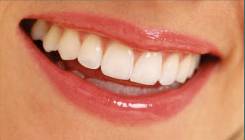Recovery should be your number one concern after oral surgery. Always follow post operative instruction provided by your surgeon or dentist, to prevent any risk of infection or trauma to the surgical site. Follow these general guidelines after oral surgery for rapid recovery and optimum healing.
Bleeding After a Tooth Extraction
Bleeding after a tooth extraction is normal and slight bleeding may be noticed for up to 24 hours after surgery. Use the gauze that was provided to you, and bite down with firm pressure for one hour. You should remove the gauze gently. It may be necessary to take a sip of water to moisten the gauze if it feels stuck to the tissue. If you continue to have bleeding in the surgical area, contact your dentist or surgeon. They may instruct you to bite on a gauze or cotton swab dipped and squeezed in ice cold water.Do not rinse with hot or cold water as this aggravates bleeding.
Swelling
Swelling is a normal response after various types of surgery. Keep your head elevated with pillows as mentioned above. You may use an ice pack on the outside of your face for the first 3-4 hours after oral surgery. No fomentation with cloth is to be done from outside the face. Swelling is usually completely gone within 7 to 10 days after oral surgery. Stiffness in the muscles of the face is also normal and may be noticed for up to 10 days after oral surgery. You may see slight bruising, typically if the surgery involved your lower wisdom teeth. If you have any concerns about swelling, or swelling has not reduced after 7 to 10 days, contact your doctor.
Pain After Oral Surgery and Medications
Pain after oral surgery varies depending on the extent of the procedure. Your dentist or surgeon will prescribe any necessary pain management medication. Follow the instructions for your medication carefully and always consult with your dentist or surgeon before taking any over-the-counter medications with your prescriptions. If you have been prescribed an antibiotic, always take all of the medication prescribed to you to prevent infection.
Rest and Recovery
Rest for at least two days is advisable after major oral surgical procedures. Physical activity is no recommended for 2 to 3 days after your surgery. Typically, you should be able to resume normal daily activities within 48 hours after surgery.
Oral Hygiene After Oral Surgery
Vigorous rinsing and spitting should be avoided for 24 hours. Brush gently and floss if able to open wide enough. Lightly rinse your mouth with water, avoiding mouthwash. Let the water fall out of your mouth on its own.
After 48 hours, consider rinsing with a warm saline or salt water solution. This will naturally help keep the surgical site clean, aiding in the healing process. Prepare your saline solution by placing one tablespoon of salt in one cup of warm water. Do not swallow the saline solution. Repeat this as necessary throughout the day. If you have had an extraction, do not attempt to remove anything from the tooth socket (hole). Rinsing lightly will dislodge any food particles from the site. The warm saline rinse should continue till 7-8 days.
Diet Plan
The cotton swab once removed after One and half hours, then cold and liquid is to be taken as cold milk, buttermilk, ice cream etc. The main meal after few hours should not be hot and soft rice (Khidri) to be eaten on the other side. The food should be soft and to be eaten on the other side for few days.
Tobacco Use
Do not smoke for at least 24 hours after oral surgery. Smoking delays healing, and may cause a very painful infection called a dry socket. This condition is a painful infection that will need to be treated by your dentist. Avoid the use of smokeless or chewing tobacco until complete healing has occurred. If you have had an extraction, the pieces from the tobacco may enter the extraction site, causing pain and discomfort in the socket.











